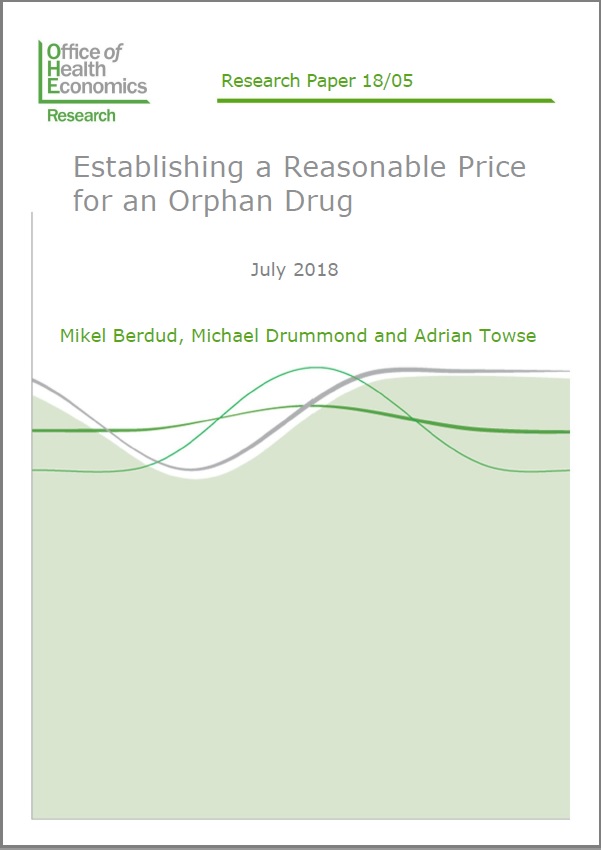Establishing a Reasonable Price for an Orphan Drug
The high cost of drugs for rare diseases (‘orphan drugs’) has generated considerable debate. While there is debate in the economic literature over whether a premium should be paid for ‘rarity’, these drugs are reimbursed with high prices in many countries. The question then arises as to what should be a reasonable price for an orphan drug?
The high cost of drugs for rare diseases (‘orphan drugs’) has generated considerable debate. While there is debate in the economic literature over whether a premium should be paid for ‘rarity’, these drugs are reimbursed with high prices in many countries. The question then arises as to what should be a reasonable price for an orphan drug?
The high cost of drugs for rare diseases (‘orphan drugs’) has generated considerable debate. While there is debate in the economic literature over whether a premium should be paid for ‘rarity’, these drugs are reimbursed with high prices in many countries. The question then arises as to what should be a reasonable price for an orphan drug?
The research by OHE authors Mikel Berdud and Adrian Towse, along with Professor Mike Drummond from University of York, addresses that question, based on the proposition that, although society may be willing to sacrifice some health gain overall to make treatments for orphan diseases available, it would not accept a situation whereby manufacturers of these drugs make higher profits than those manufacturers of drugs for non-orphan conditions. We propose a way to adjust the established cost-effectiveness thresholds (CETs) by several factors, including, the size of patient populations and the costs of research and development (R&D). Once adjusted, CETs sustain prices that generate rates of return from investments in developing orphan drugs no greater than the industry average.
Authors firstly formally develop a general algebraic expression for the adjustment of CETs based on the proposed concept of reasonable price. Then, such general expression is applied, using actual data, to adjust a CET by the two main factors playing a role: (i) the cost of R&D for orphan drugs as compared to non-orphans and, (ii) patient population sizes targeted by orphans and non-orphans.
Research shows that, on average, the estimated research and development (R&D) cost of an orphan drug is around the 27% of the cost of a non-orphan. However, potential market revenue is also lower for orphan drugs compared to non-orphans, as the average non-orphan patient populations were around 80 and 100 patients per 50,000 people for SMC and NICE appraised drugs respectively, which are higher than the cut-off population size (25 patients per 50,000 people) for orphan designation in the EMA’s definition of rare diseases. Using the NICE incremental cost-effectiveness threshold (£20K per QALY) as an illustrative anchor and adjusting by R&D costs and expected market revenue, in the base case scenario the adjusted CET for orphan drugs is estimated to be £39.3K per QALY at the orphan population cut-off and £78.5K per QALY at the orphan population mid-point. For ultra-orphan drugs (with a patient population size of 1 in 50,000 or lower) the adjusted CET resulted in £938.4K.
Based on results, authors conclude that to secure a price for orphan drugs that enables the manufacturer to achieve a rate of return equivalent to that from non-orphan drugs, the cost-effectiveness threshold for orphans and ultra-orphans would need to be higher. The threshold would also need to increase as the targeted patient population size decreases.
It is important to note that the report does not indicate what society should be prepared to pay for an orphan drug, since this involves important societal judgments about whether some population health in total should be forgone in order to provide funding for treatments for rare conditions and, if so, how much. Rather, the authors’ approach is one way of determining the maximum allowable price society should be willing to pay, based on allowing a reasonable rate of return.

